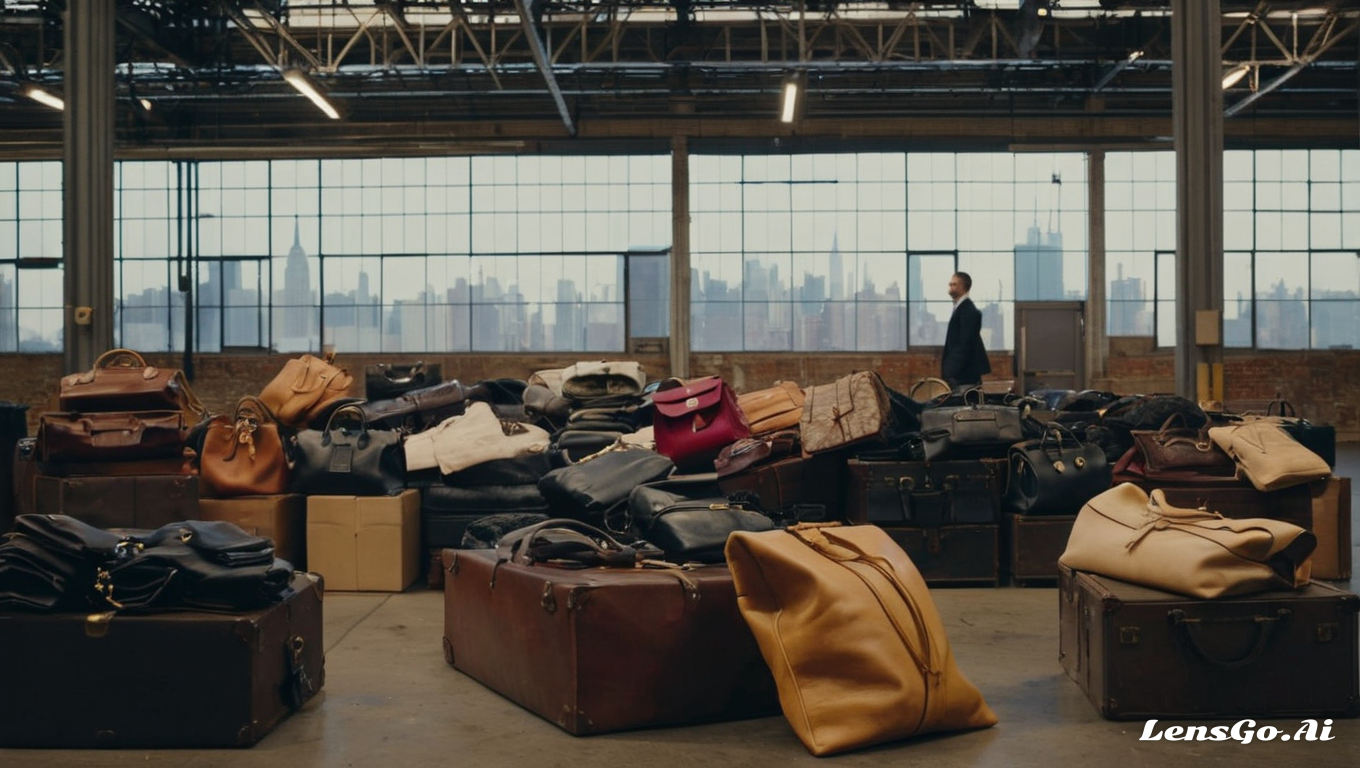
In a striking blow to the underground world of counterfeit goods, authorities in New York have made a historic seizure, uncovering a staggering $1 billion worth of fake luxury items. This landmark operation not only highlights the immense scale of the counterfeit trade but also underscores the relentless efforts of law enforcement in combating this illicit industry.
The Scope and Scale of the Seizure: The operation revealed a vast network intricately woven into the fabric of the counterfeit market. Authorities seized approximately 219,000 items, including fake handbags, shoes, and clothing, imitating luxury brands like Louis Vuitton, Balmain, Gucci, and Zara. “The seizures announced today consist of merchandise with over $1 billion in estimated retail value, the largest-ever seizure of counterfeit goods in US history,” federal prosecutor Damian Williams said. The magnitude of this seizure is unprecedented, shedding light on the extensive reach and sophistication of counterfeit operations. “The trafficking of counterfeit goods is anything but a victimless crime because it harms legitimate businesses, governments, and consumers,” New York Police Commissioner Edward Caban said.
Sophistication of the Criminal Enterprise: The counterfeiters’ operations were alarmingly advanced, with well-established manufacturing facilities, intricate supply chains, and a blend of online and offline distribution channels. This level of sophistication signifies the adaptability and innovation of these criminal enterprises, making the fight against them increasingly complex.
Global Implications: The recent seizure in New York is a stark reminder of the global scale of the counterfeit trade. Counterfeiting is not confined by borders; it is a transnational problem that affects economies and businesses worldwide. The operation in New York likely involved international networks, highlighting the need for global cooperation in tackling such issues. Countries must work together, sharing intelligence and resources, to effectively disrupt these sophisticated criminal networks. This seizure also puts pressure on international trade regulations and law enforcement agencies to tighten their scrutiny and improve their methods to prevent the global spread of counterfeit goods.
Impact on Legitimate Businesses: The counterfeit market poses a significant threat to legitimate businesses, particularly those in the luxury sector. Brands like Louis Vuitton, Balmain, Gucci, and Zara invest heavily in design, quality, and marketing to build their reputation and customer base. Counterfeit goods, which often sell for a fraction of the price of genuine articles, can significantly undercut these businesses, leading to substantial revenue losses. Moreover, the presence of fakes in the market can dilute brand value, eroding customer trust and loyalty. This not only affects the financial health of these companies but also impacts their employees, shareholders, and the broader economy.
Public Awareness and Consumer Deception: The proliferation of counterfeit goods highlights a critical need for increased public awareness and education. Consumers often find themselves deceived by the high quality and resemblance of fake products to genuine ones. This deception not only leads to financial loss for the consumer but also inadvertently supports illegal activities. Educating the public about the signs of counterfeit products, the importance of buying from reputable sources, and the broader implications of purchasing fakes is crucial. Awareness campaigns, consumer education programs, and active engagement on social media platforms can play a significant role in informing the public and curbing the demand for counterfeit goods.
Technological Innovations in Counterfeit Detection: As counterfeiters become more sophisticated, so too must the methods to detect and prevent their activities. Technological innovations are at the forefront of this battle. Blockchain technology, for instance, offers a way to track and verify the authenticity of products through a secure and transparent ledger. Artificial intelligence and machine learning can be employed to detect anomalies in manufacturing and distribution patterns that may indicate counterfeiting activities. Additionally, developments in scanning and imaging technologies can aid in the identification of fake products at borders and in the marketplace. Investing in these technologies is crucial for businesses and law enforcement agencies to stay one step ahead of counterfeiters.
The largest-ever seizure of counterfeit goods in New York is a significant victory in the ongoing battle against counterfeit trade. This operation serves as a wake-up call, highlighting the challenges posed by counterfeit goods and the need for continued vigilance. A multifaceted approach involving technology, legislation, and public awareness is imperative to strengthen defenses against the clandestine world of knock-off goods. As we move forward, it is crucial for consumers, businesses, and law enforcement to work in tandem to uphold the integrity of legitimate trade and protect the value of authentic brands.

